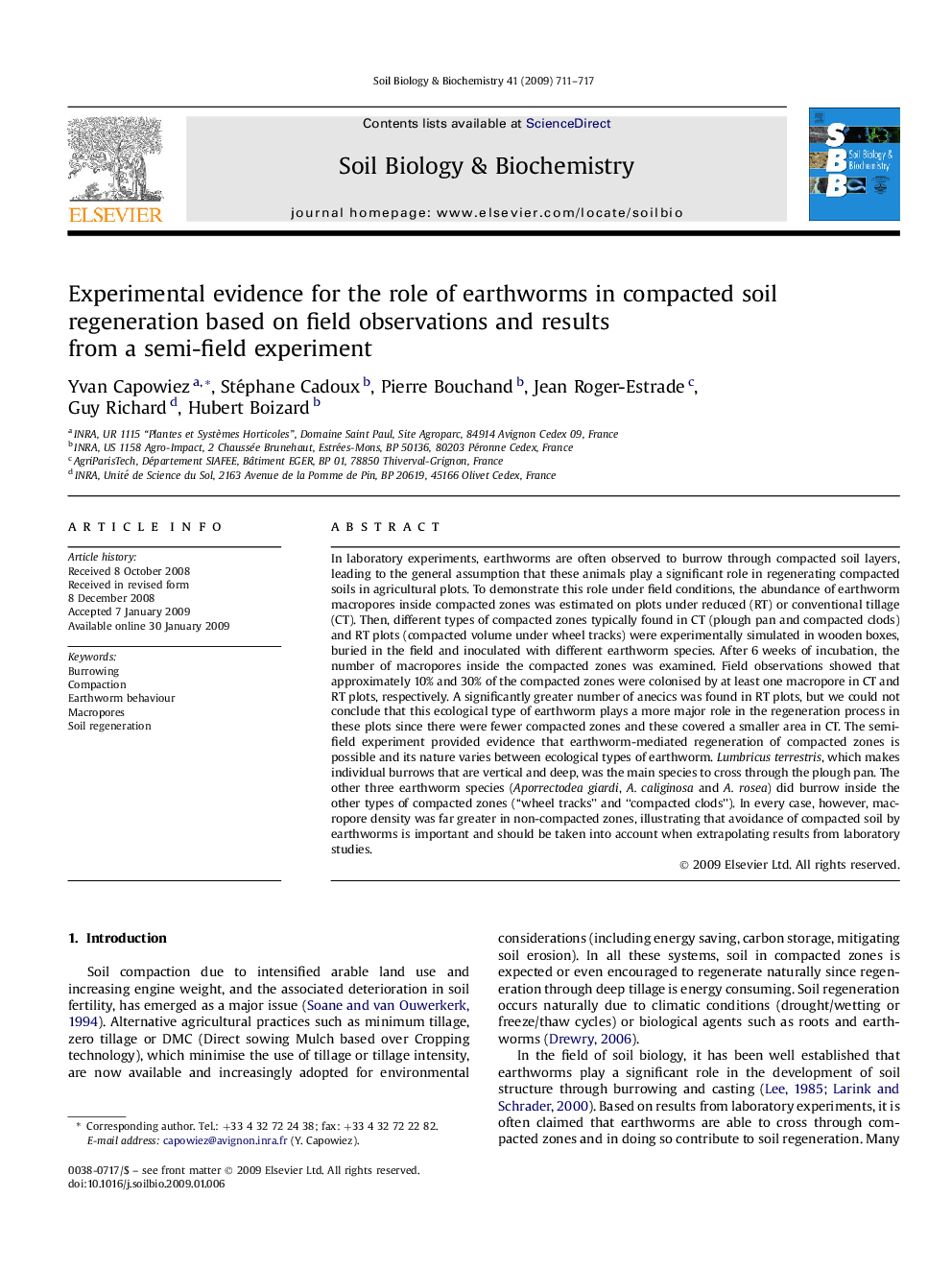| کد مقاله | کد نشریه | سال انتشار | مقاله انگلیسی | نسخه تمام متن |
|---|---|---|---|---|
| 2026531 | 1070033 | 2009 | 7 صفحه PDF | دانلود رایگان |

In laboratory experiments, earthworms are often observed to burrow through compacted soil layers, leading to the general assumption that these animals play a significant role in regenerating compacted soils in agricultural plots. To demonstrate this role under field conditions, the abundance of earthworm macropores inside compacted zones was estimated on plots under reduced (RT) or conventional tillage (CT). Then, different types of compacted zones typically found in CT (plough pan and compacted clods) and RT plots (compacted volume under wheel tracks) were experimentally simulated in wooden boxes, buried in the field and inoculated with different earthworm species. After 6 weeks of incubation, the number of macropores inside the compacted zones was examined. Field observations showed that approximately 10% and 30% of the compacted zones were colonised by at least one macropore in CT and RT plots, respectively. A significantly greater number of anecics was found in RT plots, but we could not conclude that this ecological type of earthworm plays a more major role in the regeneration process in these plots since there were fewer compacted zones and these covered a smaller area in CT. The semi-field experiment provided evidence that earthworm-mediated regeneration of compacted zones is possible and its nature varies between ecological types of earthworm. Lumbricus terrestris, which makes individual burrows that are vertical and deep, was the main species to cross through the plough pan. The other three earthworm species (Aporrectodea giardi, A. caliginosa and A. rosea) did burrow inside the other types of compacted zones (“wheel tracks” and “compacted clods”). In every case, however, macropore density was far greater in non-compacted zones, illustrating that avoidance of compacted soil by earthworms is important and should be taken into account when extrapolating results from laboratory studies.
Journal: Soil Biology and Biochemistry - Volume 41, Issue 4, April 2009, Pages 711–717